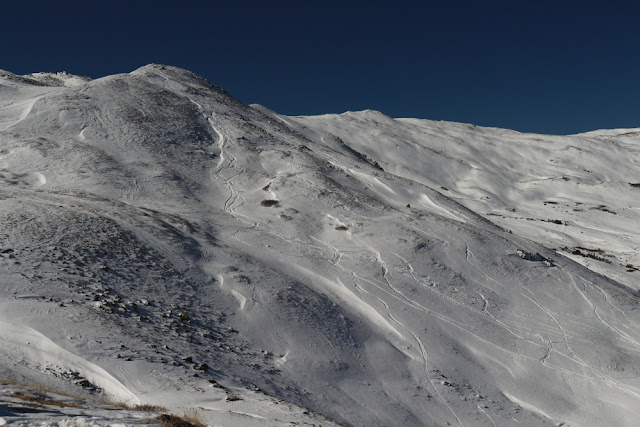Last week there was ice on the lake, this week, snow.
Not much, and it didn't last, but there was enough to paint the first winter picture of the season. Maybe the beavers will take this as a hint to close up shop for the year.
Beavers are awfully busy right now as they insulate their lodges, collect food for the winter, and strengthen their dams to hold against the spring freshets.
 |
| Just two of the many beaver lodges on Lake Wicwas |
 |
| This started as a scent pile, but looks like it may become a new home for the kids |
They will use their collected food supply - safely stored under water - to sustain them throughout their long winter under the ice. But before they bed down they are active in their preparations, including building scent piles to stake out their territory, and marking potential future lodge sites.
 |
| Beavers build scent piles to mark their real estate |
They're cutting down lots of trees, leaving naked sticks in the lake and on shore after they eat the bark off the branches they don't drag away to their lodge.
 |
| These young maples had their lives cut short |
 |
| Interesting that these branches sink without their bark - the inner wood must be dense |
These rodents are very precise in all their work - look at how meticulously they remove every bit of bark and the nutritious cambium that lies underneath.
 |
| Careful work on every stick |
The beaver is the largest rodent in North America, and the second largest in the world (the largest, the capybara, lives in South America). The beaver population seems to have grown this year just as smaller rodents such as gray squirrels, chipmunks and mice had a population explosion. Those beavers can be frustrating as they cut down trees and blueberry bushes, but I try to remember that they were here long before I arrived.
 |
| (Used without permission!) |
I've mentioned before that I use chicken wire to protect the most vulnerable trees - it's a pretty simple and easy defense that seems to work very well.
 |
| A very simple approach to stop beaver pilferage |
When the lake freezes over the beavers will retreat to their lodges and leave our trees alone - perhaps this morning's snow will encourage them to call it a day and get to bed.
 |
| Early snow on the blueberry bushes |
Now to a few pretty fall scenes around the lake. There is still a little color in the trees, accentuated by the morning sun.
Though, sadly, most of the leaves are now on the ground.
 |
| Color on the ground will soon provide nutrients for new life |
It will be a little bleak around here until we get a lasting dose of white gold.






































